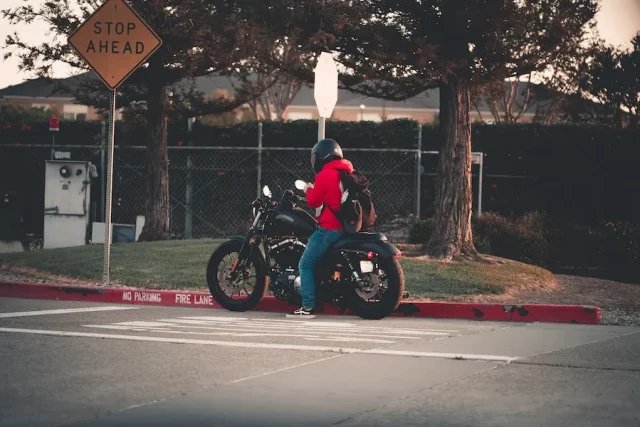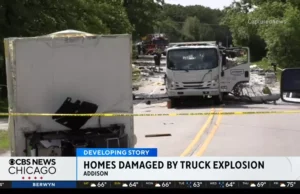If you want to buy a motorcycle, you have to decide between one that’s new and one that’s used. For a lot of people, used is the best option. This is especially true if you want a more high-end bike.
For example, used Harley Davidson motorcycles can be a good way to get the most well-known and respected brand, but maybe within your budget, whereas a new model could be out of reach for you currently.
Some of the many benefits of buying a used motorcycle include the following:
- You pay less upfront. The newer the motorcycle that you buy, the higher the cost. Depreciation makes older models sometimes significantly less expensive. You’ll also see lower insurance costs if you get an older model bike compared to a new one.
- You’re avoiding the pitfalls of immediate depreciation. Just like buying a brand new car, if you buy a completely new motorcycle, it’s going to lose value quickly. The rate of depreciation for new motorcycles can be almost 20% during the first two years of ownership.
- Buying a used motorcycle will give you more variety in your choices for parts. Aftermarket parts can be less expensive, and a used motorcycle will allow you to work with them.
- You can make a hobby out of upgrading or repairing a used bike.
- When you buy used, you have a lot of options for customization, so you’re making your bike exactly what you want.
- If you want to restore a motorcycle and sell it, you might actually be able to earn more than what you paid for it. You could make a profile because of the greater resale value.
With those benefits in mind, the following are some tips for buying a used bike.
1. Look For Any Damage
Before you buy a used motorcycle, make sure that you do a thorough visual inspection to ensure there aren’t major scratches or any big dings. You should especially look at the gas tank. If you see dents on that, it may need to be replaced. Other places to look are the exhaust pipes. If the pipes have bluing on the metal, this might tell you the motorcycle is prone to overheating.
2. Do Price Research
When you buy a used motorcycle, the purchase cost can vary based on what you want, where you’re buying it, and how you want to buy it.
Before you start planning any specifics, you should do your research online to learn about the approximate value of the types of used motorcycles you’re looking at.
When you do online research, you can get an idea of the fair market value of what you’re interested in.
It’s pretty rare for a motorcycle to stay unmodified, so when you’re looking at prices, take into consideration parts that have been added or subtracted from the bike’s showroom condition.
Once you’ve done some price research, you’re in a better position to start to budget. You’ll have to think about additional costs, too, like a setup or dealer-prep fee, a delivery fee, and maintenance expenses.
If you’re buying from a dealer, they may have created a list of recommended maintenance tasks based on their inspection or based on the mileage chart for the bike that the manufacturer creates.
A private seller, on the other hand, might just let you know what they’ve done recently and what they think you might need to do in the near-term based on their experience riding the bike.
The older the motorcycle you’re looking at, or the more miles it has, the more items might be on this list.
3. Inspect The Bike
Above we talked about simply looking for dings and damage, but there are other things you need to do to thoroughly inspect a used bike.
First, you need to talk to the salesman at the dealership or the private seller about the service history of the bike. If you’re buying from a private seller, they may have kept notes about the service history of the bike.
You’ll need a copy of the VIN, which will allow you to research the motorcycle to ensure it hasn’t been stolen or wrecked in the past.
If you’re buying from a dealership, they can do the research for you. You can also do it independently. You can find out the number of times the motorcycle has been registered with the DMV and more details on when that was done.
You can also schedule an in-person inspection, where you should look at the following:
- Look at the engine for wear and tear or damage. Look for coolant or oil leaks and oil drips below the bike.
- Go over the frame and look for missing paint or a lack of corrosion protection that could lead to rusting of the frame. Look for cracks on the frame or missing pieces.
- To check the suspension, you can look for leaks from the shocks or for struts that need to have seals replaced.
- Be on the lookout for any fluid leaks.
- Tires have a wear indicator so you can see when the tread depth is too worn away, which would make the bike unsafe in wet conditions.
4. Look At The Owner’s Manual
Ask the salesperson or the seller for the owner’s manual. If it’s available, this is going to give you details about operating the bike, its features, and the service requirements.
5. Do A Test Ride
If you’re taking a motorcycle on a test ride, it’s going to help you understand more about how it works and whether it’s right for you. Be warned, not everyone is going to let you take a test ride because of the liability and risks.
If you do take a test ride, make sure to listen to the sounds of the bike, and you want to think about how the brakes feel. Watch for any other red flags that something is off.
Finally, if you’ve gone through these steps and you want to buy the motorcycle, you should be prepared to negotiate, based on your research, for a fair market price, with consideration to any modifications that can affect that price, any future things you may need to do in terms of maintenance and past damage.














